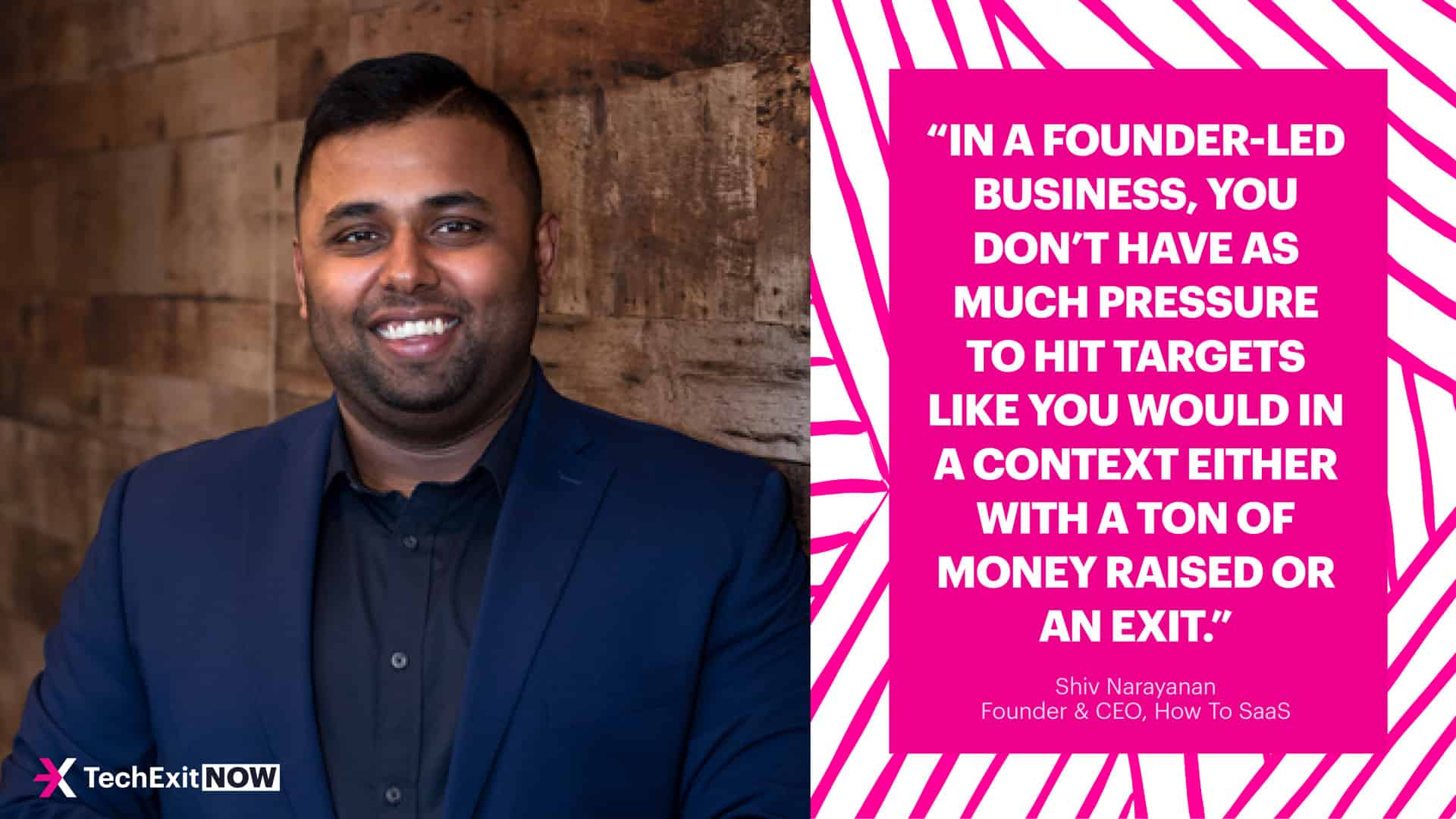Here’s What Startup CMOs Need to Know about Post-Acquisition Marketing
Stefan Palios

Many marketing leaders struggle after acquisition. Not because they aren’t talented, but because the game changes once a startup gets acquired. Shiv Narayanan experienced these challenges first-hand when he led marketing for Wild Apricot both before and after its acquisition. Speaking with TechExit.io, Shiv explained what CMOs need to know about marketing post-acquisition.
Key takeaways:
- The role of marketing leader shifts focus from creative revenue driver pre-acquisition to planner and lobbyist post-acquisition.
- Goals are north stars to chase before an acquisition but they are expected outcomes post-acquisition.
- A post-acquisition marketing leader needs to build accurate projections, develop programs, and make a business case to the board for the resources they need to hit targets.
After building Wild Apricot’s revenue with inbound digital marketing, Shiv Narayanan was instrumental in selling the company to a PE firm in 2017. He stayed on post-acquisition and learned firsthand how different things are in marketing a startup pre- versus post-sale. He now runs How to SaaS, a consultancy that helps SaaS companies create enterprise value after acquisitions. Speaking with TechExit.io, Shiv shared the key mindset evolution all CMOs must go through in order to thrive in marketing after an acquisition.
A shift from progress to planning
An acquisition is a defining moment in a startup’s lifecycle. From then on, all elements of running the business - but particularly revenue-generating activities - will be different.
Pre-acquisition: Growing a startup toward an possible acquisition is all about results, progress, and iteration. Goals are set as north stars to guide your actions, but there’s leeway to make (some) mistakes and learn along the way.
Post-acquisition: Once the startup is owned by another organization - especially a PE firm or similar kind of strategic investor - marketing has to focus more on the planning and resources necessary to hit ambitious revenue goals. Unlike in pre-acquisition land, marketing goals are expected to be hit.
In particular, Shiv noted a few transformations that happen:

“Acquirers are buying SaaS companies at outrageous multiples because of revenue predictability,” said Shiv. “That means there’s a lot of money on the line, so marketers need a different approach to financial metrics and a different approach for handling board-level planning meetings.”
How CMOs can get ready for post-acquisition marketing
After the mindset change, Shiv said there’s a process change as well. Here’s what startup marketing leaders need to know.
Step 1: Setting goals and growth projections
On the surface, this seems similar to pre-acquisition. What’s different is the goals are not based just on ambition or possibility, but on the return generated on investment to date and expected overall market growth. It’s a more analytical approach that investors use to explain why the projections make sense and are attainable.
Projections also happen at the company-wide level, meaning sales and marketing both need to contribute to revenue. For example, the whole company may have a revenue goal of $10 million. Marketing could easily be responsible for around half of that, or $5 million revenue.
From there, the CMO must identify which programs are necessary to get there, for example content marketing, performance ad campaigns, or similar.
Step 2: Identify necessary resources
Because a CMO is expected to hit projected revenues, the next step is figuring out what you’ll need to support your programs in terms of people, technology, and other resources.
Unlike pre-acquisition marketing teams that have to rely on hustle and creativity to fill resource gaps, CMOs at the post-acquisition stage are expected to justify the workforce and resource planning to explain how each person and piece supports the company to hit its goals.
Step 3: Build a business case to fill any resource gaps
Once you know what you need, you’ll need to build a business case to get any additional resources not already allocated.
For example, if you’re responsible for $5 million in revenue from marketing and currently have a $700,000 budget, you first need to assess if the budget will get you to your goals.
If the current budget won’t stretch, you’ll need documentation to explain:
How far the current budget will get you based on historic performance data across your programs (for example: to an estimated $3 million in revenue).
How much opportunity is left on the table if you don’t get the additional budget (in this example, $2 million).
How much more you’ll need to hit the full amount (for example, $300,000).
What might happen to the company if the remaining opportunity is abandoned (as in, what happens for investors and company growth if you don’t get that extra $2 million in revenue?).
How you plan to use the additional budget.
“In a founder-led business, you don’t have as much pressure to hit targets like you would in a context either with a ton of money raised or an exit,” said Shiv. “It’s a planning and projections game post-acquisition, which a lot of startup CMOs or VPs of Marketing aren’t comfortable with. That’s why a lot of marketing leaders change or teams are replaced post-acquisition.”
Don’t get stuck in the middle
Post-acquisition can be a difficult transition for a creative startup CMO or VP Marketing. When you’re used to doing your best, making it work, and being scrappy, the first time you hear about having resources at your disposal may feel like a relief. But with that relief comes responsibility. You're not just a creative marketing leader with more money to leverage; you’re a PE-backed CMO that needs to be focused on effective planning.
“At the end of the day, pre-acquisition marketing is all about campaign ROI and iterating as you go,” said Shiv. “Post-acquisition marketing is about planning and budgeting. It’s less about metrics and more about lobbying for plans.”
BACK









